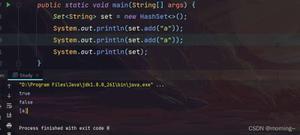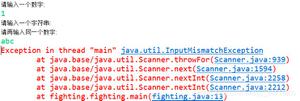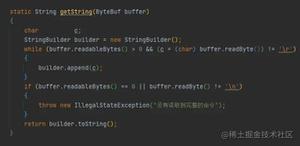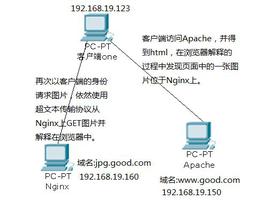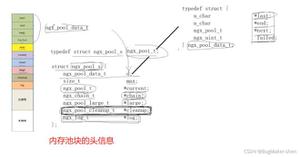基于Java回顾之集合的总结概述
Java中的集合主要集中在2部分,一部分是java.util包中,一部分是java.util.concurrent中,后者是在前者的基础上,定义了一些实现了同步功能的集合。
这篇文章主要关注java.util下的各种集合对象。Java中的集合对象可以粗略的分为3类:List、Set和Map。对应的UML图如下(包括了java.util下大部分的集合对象):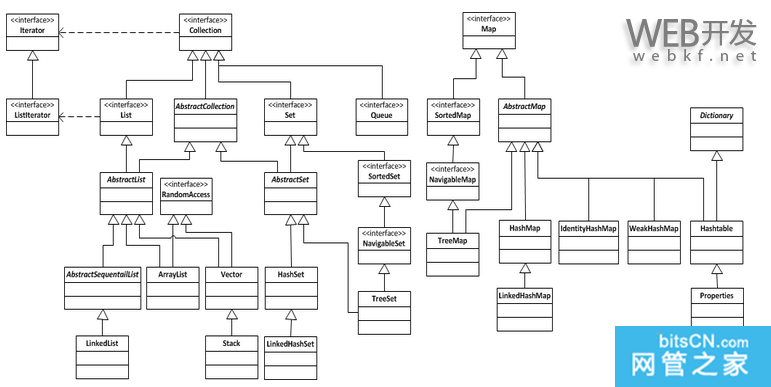
Java集合中的List和Set都从Collection出来,它是一个学习集合很不错的入口,它包含了集合中通常需要有的操作:
添加元素:add/addAll 清空集合:clear 删除元素:remove/removeAll 判断集合中是否包含某元素:contains/containsAll 判断集合是否为空:isEmpty 计算集合中元素的个数:size 将集合转换为数组:toArray 获取迭代器:iterator
我们来看一个简单的例子,下面的代码会返回一个集合,集合中的元素是随机生成的整数:
代码如下:
private static Collection initCollection() { Collection<Integer> collection = new ArrayList<Integer>(); Random r = new Random(); for (int i = 0 ; i < 5; i++) { collection.add(new Integer(r.nextInt(100))); } return collection; }
在对集合进行操作的过程中,遍历是一个经常使用的操作,我们可以使用两种方式对集合进行遍历:1) 使用迭代器对集合进行遍历。正如上面描述Collection接口时所说,所有集合都会有一个迭代器,我们可以用它来遍历集合。
代码如下:
private static void accessCollectionByIterator(Collection<Integer> collection) { Iterator<Integer> iterator = collection.iterator(); System.out.println("The value in the list:"); while(iterator.hasNext()) { System.out.println(iterator.next()); } }
2)使用foreach遍历集合。 代码如下:
private static void accessCollectionByFor(Collection<Integer> collection) { System.out.println("The value in the list:"); for(Integer value : collection) { System.out.println(value); } }
ListJava中的List是对数组的有效扩展,它是这样一种结构,如果不使用泛型,它可以容纳任何类型的元素,如果使用泛型,那么它只能容纳泛型指定的类型的元素。和数组相比,List的容量是可以动态扩展的。
List中的元素是可以重复的,里面的元素是“有序”的,这里的“有序”,并不是排序的意思,而是说我们可以对某个元素在集合中的位置进行指定。
List中常用的集合对象包括:ArrayList、Vector和LinkedList,其中前两者是基于数组来进行存储,后者是基于链表进行存储。其中Vector是线程安全的,其余两个不是线程安全的。
List中是可以包括null的,即使是使用了泛型。
ArrayList可能是我们平时用到的最多的集合对象了,在上述的示例代码中,我们也是使用它来实例化一个Collection对象,在此不再赘述。Vector
Vector的示例如下,首先我们看如何生成和输出Vector:
代码如下:
private static void vectorTest1() { List<Integer> list = new Vector<Integer>(); for (int i = 0 ; i < 5; i++) { list.add(new Integer(100)); } list.add(null); System.out.println("size of vector is " + list.size()); System.out.println(list); }
它的元素中,既包括了重复元素,也包括了null,输出结果如下: 代码如下:
size of vector is 6[100, 100, 100, 100, 100, null]
下面的示例,演示了Vector中的一些常用方法: 代码如下:
private static void vectorTest2() { Vector<Integer> list = new Vector<Integer>(); Random r = new Random(); for (int i = 0 ; i < 10; i++) { list.add(new Integer(r.nextInt(100))); } System.out.println("size of vector is " + list.size()); System.out.println(list); System.out.println(list.firstElement()); System.out.println(list.lastElement()); System.out.println(list.subList(3, 8)); List<Integer> temp = new ArrayList<Integer>(); for(int i = 4; i < 7; i++) { temp.add(list.get(i)); } list.retainAll(temp); System.out.println("size of vector is " + list.size()); System.out.println(list); }
它的输出结果如下: 代码如下:
size of vector is 10[39, 41, 20, 9, 29, 32, 54, 12, 94, 82]
[9, 29, 32, 54, 12]size of vector is 3[29, 32, 54]LinkedList
LinkedList使用链表来存储数据,它的示例代码如下:
代码如下:
LinkedList示例 private static void linkedListTest1() { LinkedList<Integer> list = new LinkedList<Integer>(); Random r = new Random(); for (int i = 0 ; i < 10; i++) { list.add(new Integer(r.nextInt(100))); } list.add(null); System.out.println("size of linked list is " + list.size()); System.out.println(list); System.out.println(list.element()); System.out.println(list.getFirst()); System.out.println(list.getLast()); System.out.println(list.peek()); System.out.println(list.peekFirst()); System.out.println(list.peekLast()); System.out.println(list.poll()); System.out.println(list.pollFirst()); System.out.println(list.pollLast()); System.out.println(list.pop()); list.push(new Integer(100)); System.out.println("size of linked list is " + list.size()); System.out.println(list); }
这里列出了LinkedList常用的各个方法,从方法名可以看出,LinkedList也可以用来实现栈和队列。输出结果如下:
代码如下:
size of linked list is 11[17, 21, 5, 84, 19, 57, 68, 26, 27, 47, null]
null
null
null
size of linked list is 8[100, 84, 19, 57, 68, 26, 27, 47]Set
Set 和List类似,都是用来存储单个元素,单个元素的数量不确定。但Set不能包含重复元素,如果向Set中插入两个相同元素,那么后一个元素不会被插入。
Set可以大致分为两类:不排序Set和排序Set,不排序Set包括HashSet和LinkedHashSet,排序Set主要指TreeSet。其中HashSet和LinkedHashSet可以包含null。HashSet
HashSet是由Hash表支持的一种集合,它不是线程安全的。
我们来看下面的示例,它和Vector的第一个示例基本上是相同的:
代码如下:
private static void hashSetTest1() { Set<Integer> set = new HashSet<Integer>(); for (int i = 0; i < 3; i++) { set.add(new Integer(100)); } set.add(null); System.out.println("size of set is " + set.size()); System.out.println(set); }
这里,HashSet中既包含了重复元素,又包含了null,和Vector不同,这里的输出结果如下: 代码如下:
size of set is 2[null, 100]
对于HashSet是如何判断两个元素是否是重复的,我们可以深入考察一下。Object中也定义了equals方法,对于HashSet中的元素,它是根据equals方法来判断元素是否相等的,为了证明这一点,我们可以定义个“不正常”的类型: 代码如下:
定义MyInteger对象
class MyInteger{ private Integer value; public MyInteger(Integer value) { this.value = value; } public String toString() { return String.valueOf(value); } public int hashCode() { return 1; } public boolean equals(Object obj) { return true; }}可以看到,对于MyInteger来说,对于任意两个实例,我们都认为它是不相等的。
下面是对应的测试方法:
代码如下:
private static void hashSetTest2() { Set<MyInteger> set = new HashSet<MyInteger>(); for (int i = 0; i < 3; i++) { set.add(new MyInteger(100)); } System.out.println("size of set is " + set.size()); System.out.println(set); }
它的输出结果如下: 代码如下:
size of set is 3[100, 100, 100]
可以看到,现在HashSet里有“重复”元素了,但对于MyInteger来说,它们不是“相同”的。TreeSetTreeSet是支持排序的一种Set,它的父接口是SortedSet。
我们首先来看一下TreeSet都有哪些基本操作:
代码如下:
private static void treeSetTest1() { TreeSet<Integer> set = new TreeSet<Integer>(); Random r = new Random(); for (int i = 0 ; i < 5; i++) { set.add(new Integer(r.nextInt(100))); } System.out.println(set); System.out.println(set.first()); System.out.println(set.last()); System.out.println(set.descendingSet()); System.out.println(set.headSet(new Integer(50))); System.out.println(set.tailSet(new Integer(50))); System.out.println(set.subSet(30, 60)); System.out.println(set.floor(50)); System.out.println(set.ceiling(50)); }
它的输出结果如下: 代码如下:
[8, 42, 48, 49, 53]
[53, 49, 48, 42, 8][8, 42, 48, 49][53][42, 48, 49, 53]TreeSet中的元素,一般都实现了Comparable接口,默认情况下,对于Integer来说,SortedList是采用升序来存储的,我们也可以自定义Compare方式,例如以降序的方式来存储。
下面,我们首先重新定义Integer:
代码如下:
定义MyInteger2对象 class MyInteger2 implements Comparable { public int value; public MyInteger2(int value) { this.value = value; } public int compareTo(Object arg0) { MyInteger2 temp = (MyInteger2)arg0; if (temp == null) return -1; if (temp.value > this.value) { return 1; } else if (temp.value < this.value) { return -1; } return 0; } public boolean equals(Object obj) { return compareTo(obj) == 0; } public String toString() { return String.valueOf(value); } }
下面是测试代码: 代码如下:
private static void treeSetTest2() { TreeSet<Integer> set1 = new TreeSet<Integer>(); TreeSet<MyInteger2> set2 = new TreeSet<MyInteger2>(); Random r = new Random(); for (int i = 0 ; i < 5; i++) { int value = r.nextInt(100); set1.add(new Integer(value)); set2.add(new MyInteger2(value)); } System.out.println("Set1 as below:"); System.out.println(set1); System.out.println("Set2 as below:"); System.out.println(set2); }
代码的运行结果如我们所预期的那样,如下所示: 代码如下:
Set1 as below:[13, 41, 42, 45, 61]Set2 as below:[61, 45, 42, 41, 13]
MapMap中存储的是“键值对”,和Set类似,Java中的Map也有两种:排序的和不排序的,不排序的包括HashMap、Hashtable和LinkedHashMap,排序的包括TreeMap。非排序Map
HashMap和Hashtable都是采取Hash表的方式进行存储,HashMap不是线程安全的,Hashtable是线程安全的,我们可以把HashMap看做是“简化”版的Hashtable。
HashMap是可以存储null的,无论是对Key还是对Value。Hashtable是不可以存储null的。
无论HashMap还是Hashtable,我们观察它的构造函数,就会发现它可以有两个参数:initialCapacity和loadFactor,默认情况下,initialCapacity等于16,loadFactor等于0.75。这和Hash表中可以存放的元素数目有关系,当元素数目超过initialCapacity*loadFactor时,会触发rehash方法,对hash表进行扩容。如果我们需要向其中插入过多元素,需要适当调整这两个参数。
我们首先来看HashMap的示例:
代码如下:
private static void hashMapTest1() { Map<Integer,String> map = new HashMap<Integer, String>(); map.put(new Integer(1), "a"); map.put(new Integer(2), "b"); map.put(new Integer(3), "c"); System.out.println(map); System.out.println(map.entrySet()); System.out.println(map.keySet()); System.out.println(map.values()); }
这会输出HashMap里的元素信息,如下所示。 代码如下:
{1=a, 2=b, 3=c}[1=a, 2=b, 3=c][1, 2, 3][a, b, c]
下面的示例是对null的演示: 代码如下:
private static void hashMapTest2() { Map<Integer,String> map = new HashMap<Integer, String>(); map.put(null, null); map.put(null, null); map.put(new Integer(4), null); map.put(new Integer(5), null); System.out.println(map); System.out.println(map.entrySet()); System.out.println(map.keySet()); System.out.println(map.values()); }
执行结果如下: 代码如下:
{null=null, 4=null, 5=null}[null=null, 4=null, 5=null][null, 4, 5][null, null, null]
接下来我们演示Hashtable,和上述两个示例基本上完全一样(代码不再展开): 代码如下:
Hashtable示例 private static void hashTableTest1() { Map<Integer,String> table = new Hashtable<Integer, String>(); table.put(new Integer(1), "a"); table.put(new Integer(2), "b"); table.put(new Integer(3), "c"); System.out.println(table); System.out.println(table.entrySet()); System.out.println(table.keySet()); System.out.println(table.values()); } private static void hashTableTest2() { Map<Integer,String> table = new Hashtable<Integer, String>(); table.put(null, null); table.put(null, null); table.put(new Integer(4), null); table.put(new Integer(5), null); System.out.println(table); System.out.println(table.entrySet()); System.out.println(table.keySet()); System.out.println(table.values()); }
执行结果如下: 代码如下:
{3=c, 2=b, 1=a}[3=c, 2=b, 1=a][3, 2, 1][c, b, a]Exception in thread "main" java.lang.NullPointerException at java.util.Hashtable.put(Unknown Source) at sample.collections.MapSample.hashTableTest2(MapSample.java:61) at sample.collections.MapSample.main(MapSample.java:11)
可以很清楚的看到,当我们试图将null插入到hashtable中时,报出了空指针异常。排序Map排序Map主要是指TreeMap,它对元素增、删、查操作时的时间复杂度都是O(log(n))。它不是线程安全的。
它的特点和TreeSet非常像,这里不再赘述。
以上是 基于Java回顾之集合的总结概述 的全部内容,
来源链接:
utcz.com/p/206950.html


